Occupational Safety Training at Hanaka Industrial Park
99,000 ₫
Note: The above price is calculated per person and may vary depending on the number of trainees participating in the course as well as market fluctuations. For more accurate pricing support, please refer to the pricing table or contact our consulting staff directly.
Occupational safety is a crucial issue at Hanaka Industrial Park and needs to be addressed promptly to ensure the health and safety of workers while enhancing the reputation of businesses operating here. The Occupational Safety Training course is one of the most effective solutions to raise awareness among workers in Hanaka Industrial Park on how to prevent workplace accidents.
Table of Contents
Toggle1. Overview of Hanaka Industrial Park
a. History of Hanaka Industrial Park
In the dynamic economic life of Vietnam, a story of remarkable development is being recorded at Hanaka Industrial Park. With the goal of building modern and convenient infrastructure for businesses, this industrial park has gone through an impressive journey, from being included in the development plan of industrial parks to remarkable efforts to meet international standards.
Initiated by the decision of the Prime Minister of Vietnam in 2008, Hanaka Industrial Park quickly attracted attention and investment from Hanaka Group. With an initial planned area of 74 ha, the industrial park promises to bring many economic development opportunities to the Bac Ninh region.
However, the journey of Hanaka Industrial Park did not stop there. With the adjustment of the planned area according to the decision of Bac Ninh People’s Committee in 2014, the area was reduced to 55.289 ha, but the attraction and development potential of the industrial park remain strong.
The prime location of Hanaka Industrial Park is a significant advantage. Located only about 25km from the capital Hanoi, and adjacent to Noi Bai International Airport, Cai Lan deep-water port (Ha Long City), Hai Phong seaport, and Lang Son border gate, the industrial park has not only strong domestic development potential but also serves as an important trading hub for domestic and international economic regions.

b. Companies inside Hanaka Industrial Park
Updating
c. Economic potential of Hanaka Industrial Park
Hanaka Industrial Park not only meets infrastructure requirements for electricity, water, and transportation but also focuses on creating a favorable business environment for enterprises. The power supply, water supply, and wastewater treatment systems are invested with modern technology, ensuring reliable provision and environmental protection.
In particular, Hanaka Industrial Park also facilitates communication and information connectivity. Fiber optic systems are carefully arranged along main transportation routes, ensuring fast and stable information transmission.
Additionally, Hanaka Industrial Park ensures security and safety, with the construction of parking lots, lighting systems, and fire water pipelines along transportation routes. Ground leveling from +5.5m to +6.125m also ensures durability and stability of the industrial park.
On its challenging development journey, Hanaka Industrial Park has affirmed its position in Vietnam’s industrial landscape. With dedication and continuous effort, the park has created a favorable business environment, attracting enterprises and contributing positively to the economic development of the Bac Ninh region.
Hanaka Industrial Park is becoming a must-visit destination for investors and businesses. With potential growth and continuous effort to provide modern amenities, the industrial park promises to remain a significant driver for Vietnam’s economic development in the near future.

d. Geographical location of Hanaka Industrial Park
View map: here
Location: Trang Ha Ward and Dong Nguyen Ward, Tu Son Town, Bac Ninh Province
- Road: Distance to Hanoi Capital: 25km
- Air: Distance to Noi Bai Airport: 38km
- Seaport: Distance to Hai Phong Port: 125km
Total area: 55 ha
2. Overview of Occupational Safety Training at Hanaka Industrial Park
a. What is occupational safety training?
- The Bac Ninh occupational safety training course is an in-depth training program on occupational safety for those working in industry, construction, manufacturing, and high-risk professions. This training course is organized by Nam Viet’s occupational safety training centers at Hanaka Industrial Park.
- During the course, trainees are provided with the knowledge and skills necessary to ensure their own safety and that of colleagues during work. Topics include legal regulations on occupational safety, identifying and assessing potential risks, methods for inspecting and maintaining safety equipment, first aid skills, and emergency response handling.
- For businesses, training employees in occupational safety not only enhances employees’ capabilities and work efficiency but also ensures compliance with legal safety regulations and minimizes the risk of workplace accidents.
REGISTER FOR OCCUPATIONAL SAFETY TRAINING SERVICE
b. Training duration
Occupational safety training duration depends on factors such as job type and industry. However, the exact total training duration for each group is regulated in Article 19 of Decree 44/2016/ND-CP
- Group 1: 16 hours
- Group 2: 48 hours
- Group 3: 24 hours
- Group 4: 16 hours
- Group 5: 16 hours
- Group 6: 4 hours
c. Training content
Occupational safety training content includes knowledge and skills necessary to minimize workplace accident risks, ensuring safety for workers and company assets. Specifically, training may include:
- Knowledge of occupational safety laws, state and company safety regulations.
- Knowledge of workplace hazards and types of accidents.
- Skills and methods for using personal protective equipment and general protective devices.
- Methods to reduce accident risks, ensuring safety during work.
- Handling dangerous situations and organizing rescue in case of accidents.
- Knowledge of workplace environmental protection.
Training content may also be adjusted to suit specific industries and working conditions.
d. Occupational safety training certificate
Occupational Safety and Hygiene Training Certificate
- The certificate format is described in Form 08 Appendix II of Decree 44/2016/ND-CP and is issued to Groups 1, 2, 5, 6.
- The certificate measures 13 cm x 19 cm, with a sky-blue front cover.

- The front content of the certificate is shown as above
- The back has a white background with content shown as below.

- The card format is described in Form 06 Appendix II of Decree 44/2016/ND-CP
- Group 3 workers will be issued an occupational safety card (commonly called occupational safety certificate Group 3).
- The card measures 60 mm x 90 mm, with content on the front and back as shown below.

The employer may issue a Group 3 safety card to the trainee after passing the assessment and having a labor contract between both parties.
- Monitoring book for Groups 1, 2, 5, 6 is described in Form 09 Appendix II of Decree 44/2016/ND-CP.
- Monitoring book for Group 3 is described in Form 10 Appendix II of Decree 44/2016/ND-CP.
- Monitoring book for Group 4 is described in Form 11 Appendix II of Decree 44/2016/ND-CP.
- Group 4 only receives the monitoring book without a Group 4 safety certificate.
- Content of Group 4 monitoring book is shown as below.

3. Employment issues at Hanaka Industrial Park
Hanaka Industrial Park has not only created modern infrastructure but also significantly contributed to creating many employment opportunities for the community. With remarkable growth and investment attraction from businesses, the industrial park has generated a large number of jobs for local workers.
With an initial planned area of 74 ha, later adjusted, Hanaka Industrial Park has attracted many enterprises in various fields such as manufacturing, information technology, logistics, and services. Thanks to modern infrastructure, convenient location, and favorable business environment, many companies have chosen to establish factories, production workshops, and representative offices at Hanaka Industrial Park.
Strong investment and development at this industrial park have created a significant number of jobs for residents in the area and nearby regions. Workers, technicians, office staff, maintenance personnel, transport workers, and many other professions have opportunities to find stable employment and income here.
In addition to direct employment, Hanaka Industrial Park impacts industry growth and economic development in surrounding areas. Many small and medium enterprises have expanded operations and sought human resources from the local community. This creates more job opportunities and promotes comprehensive economic development.
4. Main causes of occupational accidents in industrial parks
Main causes of occupational accidents in industrial parks include:
- Failure to meet safety standards: Some industrial parks do not meet occupational safety standards or lack personal protective equipment for workers.
- Insufficiently trained staff: Some workers are not adequately trained in occupational safety and do not know how to use protective equipment.
- Lack of safety equipment: Some industrial parks lack safety equipment such as stairs, handrails, emergency exits, fire-fighting systems…
- Lack of supervision: Some industrial parks do not have an occupational safety supervision team or supervision is not strict enough, with irregular inspections of equipment and safety systems.
- Excessive working hours: Some workers have to work too long or do not get enough rest, causing fatigue and mistakes during work.
- Non-compliance with safety regulations: Some workers do not follow safety regulations or fail to wear sufficient protective equipment, leading to occupational accidents.

5. Measures to Control Occupational Accidents in Hanaka Industrial Park
Controlling occupational accidents is a top priority at Hanaka Industrial Park to ensure a safe working environment for workers. Here are some measures applied to control occupational accidents in this industrial park:
- Implementing occupational safety regulations: Hanaka Industrial Park complies with all occupational safety regulations issued by competent authorities and management agencies. Businesses operating in the area are also required to follow similar safety regulations to ensure a safe working environment.
- Training and education on occupational safety: Workers and managers in Hanaka Industrial Park are trained on safety rules, work procedures, and the use of personal protective equipment. This helps raise safety awareness and reduce the risk of occupational accidents.
- Equipment inspection and maintenance: Equipment and machinery in Hanaka Industrial Park are regularly inspected to ensure safe and efficient operation. Periodic maintenance and timely repairs are also carried out to prevent malfunctions and accidents caused by equipment failure.
- Using personal protective equipment: Workers are required to properly and fully use personal protective equipment such as helmets, gloves, safety glasses, respirators, and safety shoes. This helps minimize the risk of injury and protects workers’ health.
- Periodic monitoring and inspection: Hanaka Industrial Park conducts regular monitoring and inspections to ensure compliance with occupational safety regulations. These inspections can be conducted by authorities or by specialized internal units within the industrial park.
- Building a safety culture: Hanaka Industrial Park emphasizes the importance of occupational safety and builds a culture of safe working. This includes creating an environment where everyone prioritizes safety, reports incidents and risks, and participates in educational activities to raise safety awareness.
- Periodically conducting occupational environment monitoring in factories, collecting and analyzing harmful factors for workers, then adjusting to reduce hazards to prevent occupational diseases.
6. Benefits of Occupational Safety Training
An Toan Nam Viet provides enterprises with the following benefits after completing occupational safety training courses in accordance with Decree 44/2016/ND-CP on Occupational Safety and Hygiene for companies, factories, and enterprises.
- Workers can identify potential risks of occupational accidents and take preventive measures to avoid them.
- Enterprises can establish risk prevention measures in production, operation, and maintenance processes.
- Reduce costs associated with potential safety hazards at work.
- Uninterrupted production helps increase labor productivity and product quality.
- Compliance with labor safety laws, avoiding legal risks.
- Enhances credibility and professionalism, thereby elevating the enterprise’s brand.
Nam Viet’s training courses are solutions to prevent and counter external risk factors affecting individuals so they can avoid dangers that may lead to injuries or even death.
REGISTER FOR OCCUPATIONAL SAFETY TRAINING SERVICE
7. Customer Feedback After Completing Training Courses
An Toan Nam Viet has many years of experience accompanying enterprises across Vietnam, especially in the southern provinces. This responsibility is highly valuable, so Nam Viet’s Occupational Safety Training is increasingly professional. The motivation for Nam Viet’s growth comes from positive feedback and suggestions from enterprises. Below are feedbacks from our partners that we have served.
See more customer interviews after using Nam Viet’s services
8. Occupational Safety Training Capability of An Toan Nam Viet
An Toan Nam Viet is a reputable and quality center for occupational safety training in Vietnam. Training sessions take place continuously at production workshops, factories, or construction sites nationwide (63 provinces in Vietnam).
REGISTER FOR OCCUPATIONAL SAFETY TRAINING SERVICE
License for occupational safety training
- An Toan Nam Viet has been inspected and certified by the Department of Safety under the Ministry of Labor – Invalids and Social Affairs, confirming our qualification to conduct occupational safety and hygiene training. This strengthens our capability in occupational safety training.

Materials and Lectures
- Before being included in ATLĐ training courses, materials are reviewed to ensure accuracy and effectiveness in teaching.
- Our instructors’ teaching methods follow An Toan Nam Viet standards, researched and refined by experts in occupational safety and hygiene training to maximize learners’ knowledge absorption.
Facilities
- Controlling classroom factors affecting training increases teaching efficiency and learners’ comprehension.
- Our training support facilities provide spacious classrooms meeting standards for area, lighting, training equipment, etc.
9. Nationwide Reputable Safety Training Center
At An Toan Nam Viet, we prioritize occupational safety training. Teaching workers to protect themselves equips them with safety knowledge for their livelihoods and contributes to nation-building.
To ensure effective training, we meticulously prepare everything, from tools, teaching equipment, materials, sound, to lighting.
Our occupational safety instructors are experts with years of experience. They even have research on identifying hazards in various industries and preventive measures.
Lectures are practical and delivered vividly to workers, ensuring comfort and good comprehension. Knowledge is always aligned with Decree 44/2016/ND-CP.
Learners gain numerous safety measures and self-protection skills, applying them effectively in real work.
Our safety training center prides itself on providing professional, reputable training with the following advantages:
- Competitive training costs with guaranteed quality.
- Flexible training schedule based on enterprise production.
- Fast and lawful procedures for issuing training certificates.
- Experienced instructors with years in the field.
- Controlled classroom factors to maximize teaching efficiency and learning outcomes.
- Lessons tailored to occupational safety for enterprises.
- An Toan Nam Viet works dedicatedly and professionally to support customers accurately and promptly.

10. Additional Occupational Safety Training Resources
1 review for Occupational Safety Training at Hanaka Industrial Park
No comments yet

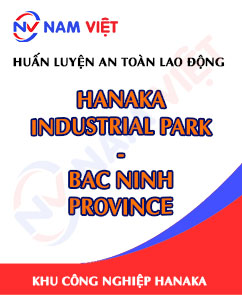
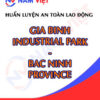
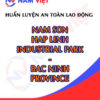



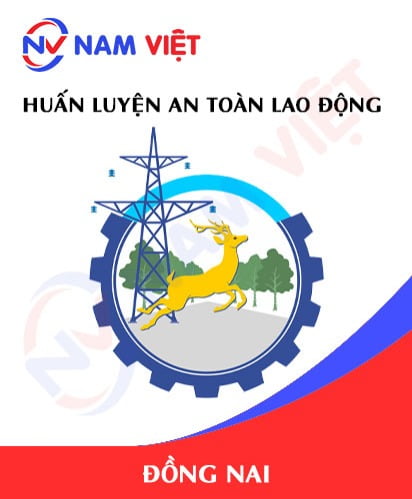

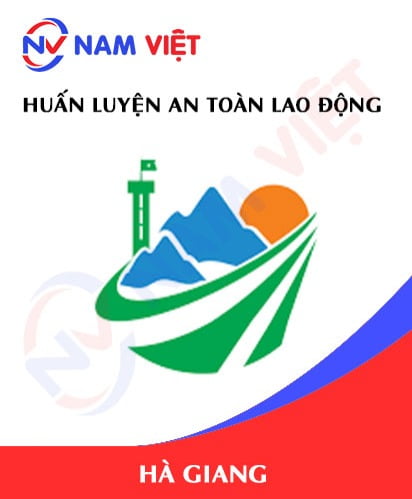





namchinh.haiphong341
Dịch vụ huấn luyện an toàn lao động tốt!